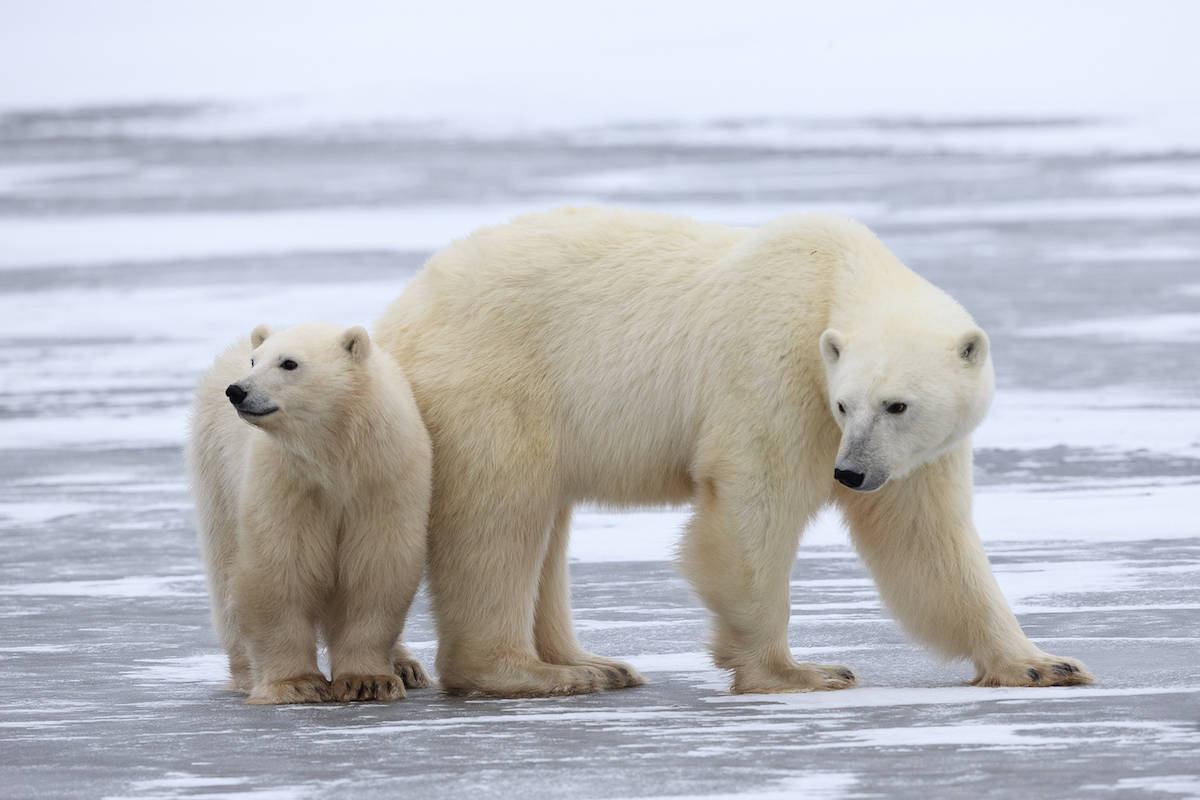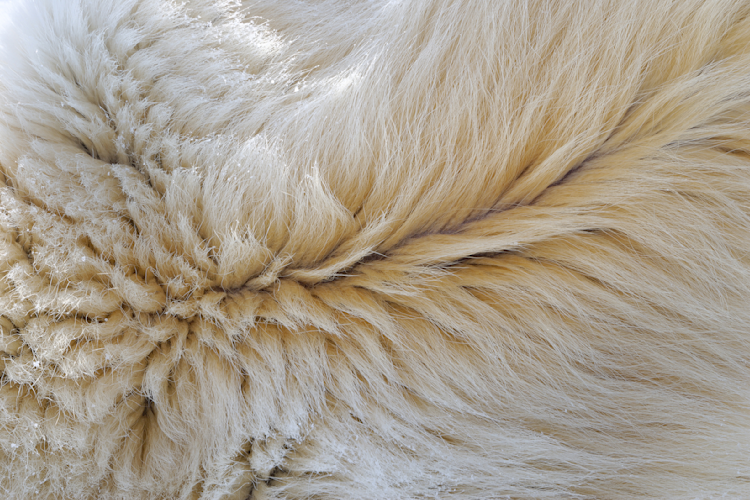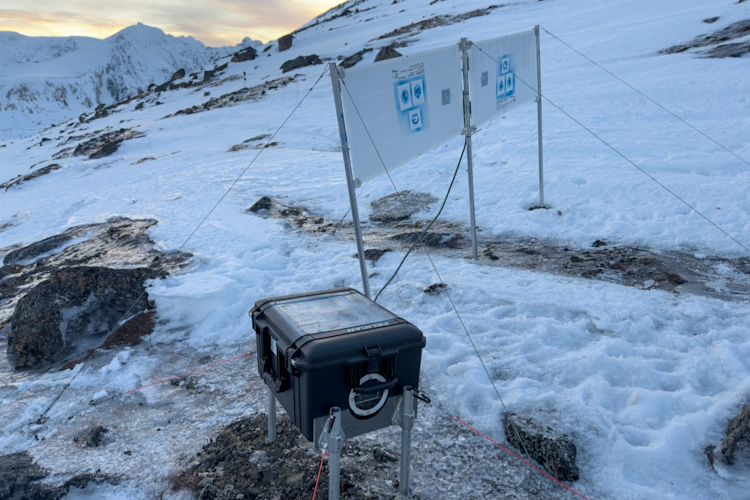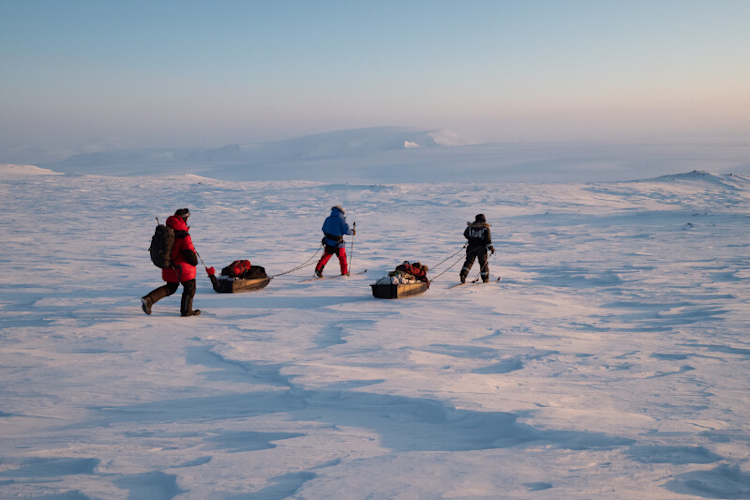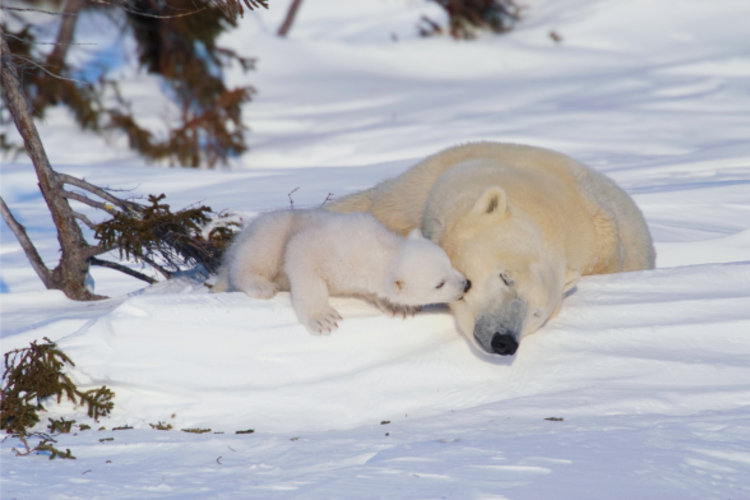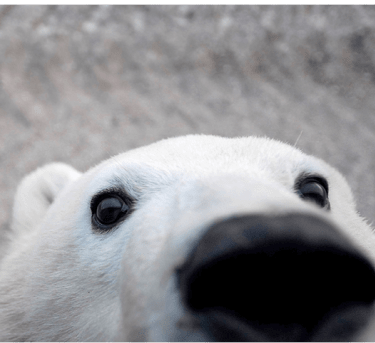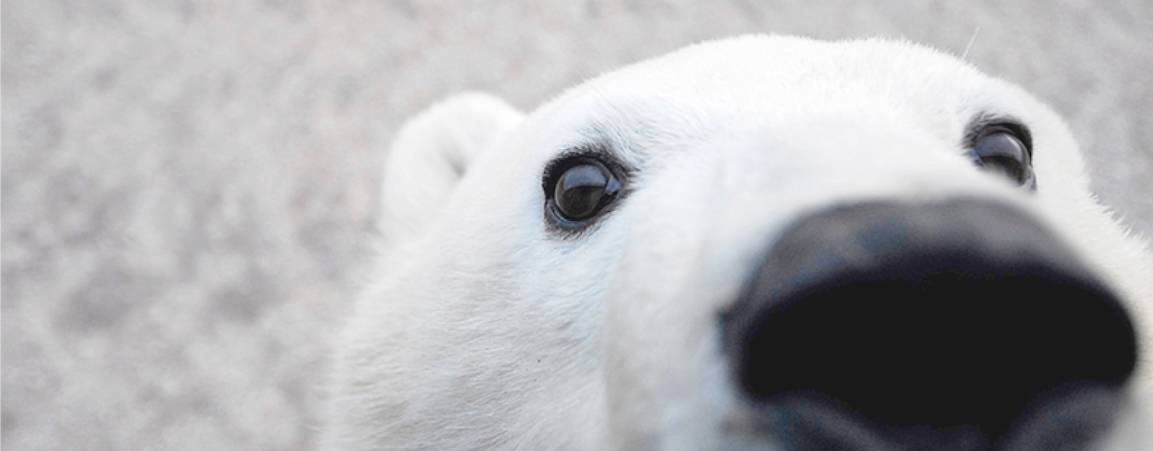New research is raising greater concern about the Western Hudson Bay (WHB) population of polar bears, which includes the Churchill area. These studies add further context to the long-term decline observed in this population.
Climate still the primary threat, but hunting stress threatens to increase in some regions
In a paper released in June, a team led by the U.S. Geological Survey modeled the impacts to polar bear populations of both environmental stressors and direct threats from human activity. For the species overall, sea ice conditions and access to marine prey are likely to have a greater negative impact on populations than any other threat.
Across most of the Arctic, direct stressors like hunting and industrial activity were a lesser threat and varied by region. However, in regions with seasonal ice, including WHB, the models suggest that hunting could become the most significant non-environmental threat.
Decline in pregnancy rates, body condition for female WHB bears underscores the importance of moms and cubs
In an August paper, researchers found a significantly lower percentage of potentially pregnant females in the WHB population compared to four decades ago — and those that were pregnant were in worse physical condition.
Females are critical to healthy populations, especially in areas where their sea ice habitat is disappearing most quickly.
This is likely the first study to investigate long-term trends in pregnancy rates for WHB polar bears in relation to body mass, age and sea ice conditions.
What can we do?
These concerning findings are consistent with the long-term decline of the WHB population. There’s time to reverse this trend if we take actions now to protect polar bear mothers and cubs.
We respectfully urge Nunavut to reconsider changes to its hunting quota to better protect female bears: Recent changes to regulations in Nunavut, Canada, allow more female polar bears to be hunted. This puts future generations of polar bears at risk. Without the involvement of the people who live alongside polar bears, we will struggle with meaningful conservation efforts.
We’re calling on polar bear management authorities in Canada to ensure regular and accurate monitoring to assess the population impacts of hunting in regions where that threat is rising.
We also call on authorities to identify, monitor and protect denning areas as environmental changes — like wildfire and melting permafrost — may force pregnant polar bears in this region to choose different den sites.
Polar Bears International funds research into polar bears’ denning period — the most vulnerable time in their lives. Our work includes testing technology to better detect dens under snow and monitoring polar bear behavior at den sites. We also support population monitoring and efforts to help people and polar bears live safely alongside each other.
